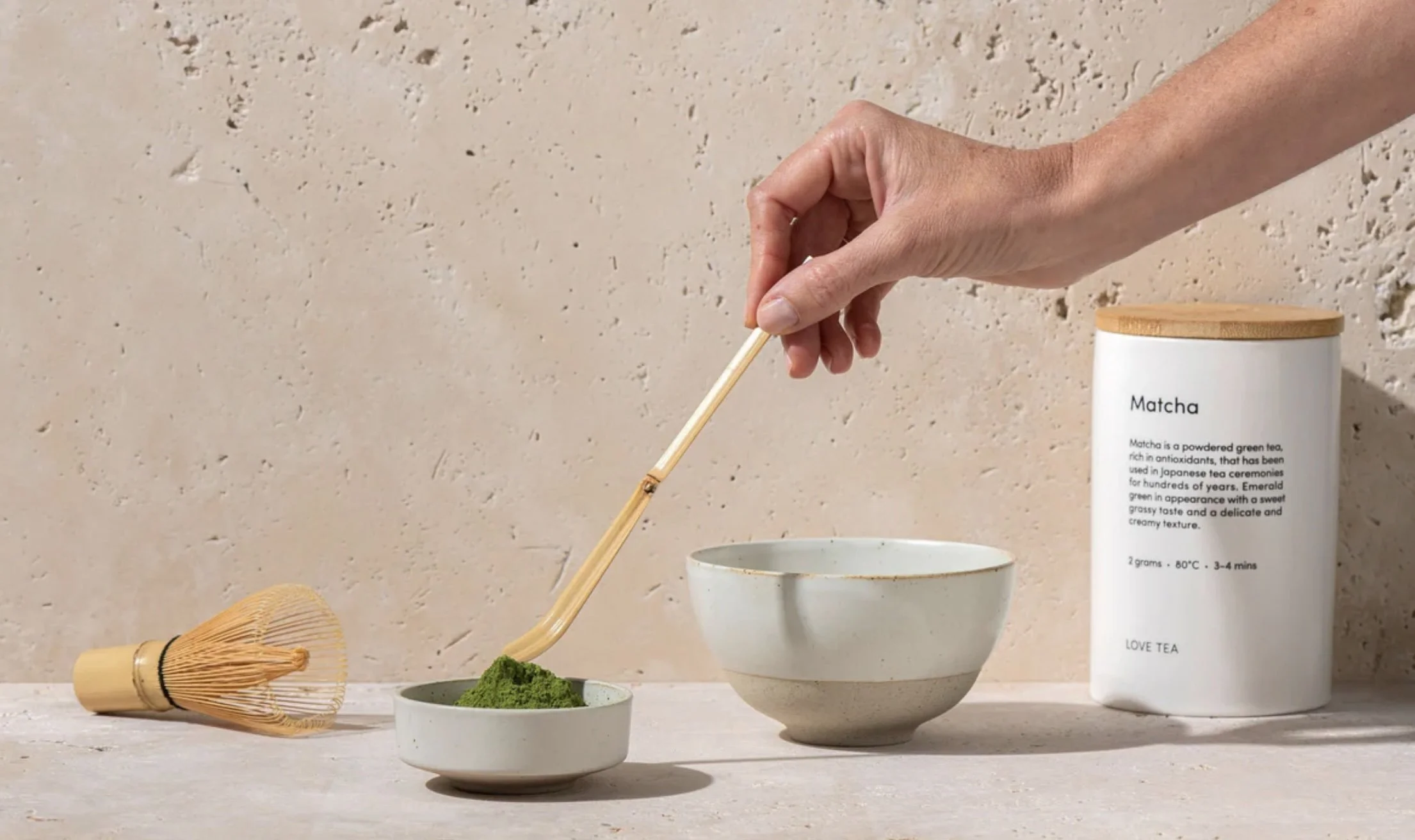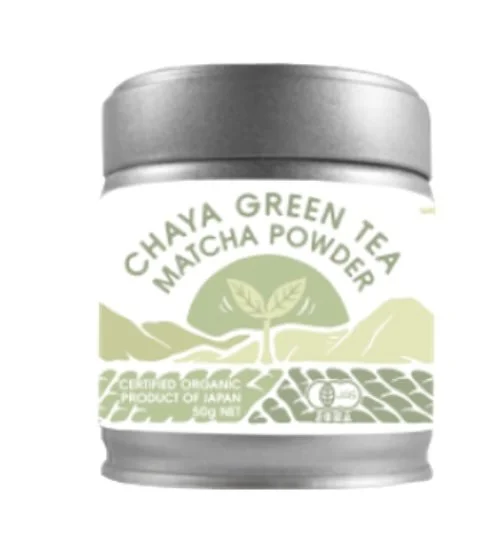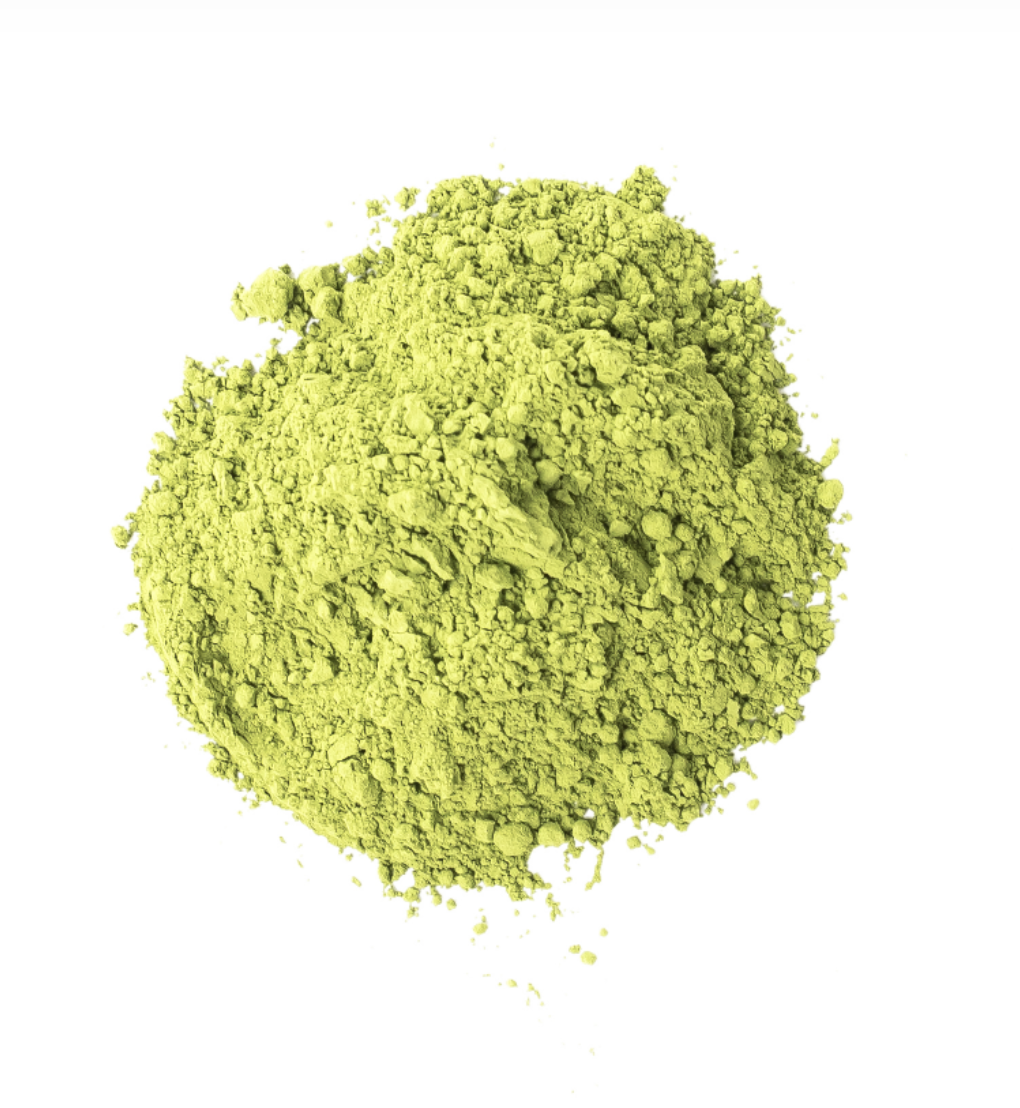Know your Matcha!
Hello friends,
Nic our resident naturopath has put together some information about matcha green tea. What to look for, what to avoid and some of the best ways to drink it.
The Magic of Matcha
Matcha has become a social media trend and a modern wellness icon, showing up in everything from lattes and smoothies to skincare and baking. But this finely milled, vibrant green tea powder is more than a trendy superfood – it’s steeped in centuries of tradition, meticulous farming, and powerful health benefits.
Let’s explore where matcha comes from, how it’s made, what makes good matcha stand out, and what to look out for when ordering your next matcha latte.
The Origins of Matcha
Matcha originated in China during the Tang dynasty (7th–10th centuries), when tea leaves were steamed and formed into bricks for easy storage and trade. These bricks were later ground into a powder and whisked with hot water, similar to how matcha is enjoyed today.
However, it was in Japan – after Zen Buddhist monk Eisai brought powdered tea seeds from China in the late 12th century – that matcha evolved into the refined practice we know. Samurai, monks, and aristocrats used matcha in meditation and tea ceremonies, prized for its ability to promote both alertness and calm.
How Matcha is Grown & Produced
High-quality matcha production is a labour of love:
Shade-grown cultivation: About 3-4 weeks before harvest, tea bushes are shaded with bamboo mats or tarps, reducing sunlight by up to 90%. This triggers the plants to produce more chlorophyll and amino acids, especially L-theanine, which gives matcha its signature vibrant green colour and smooth, umami-rich flavour.
Hand-picking: Only the youngest, most tender leaves at the top of the plant are picked. These are steamed to prevent oxidation and preserve nutrients.
Drying & destemming: Leaves are dried and deveined, creating a product calledtencha.
Stone grinding: Tencha is ground between granite stones into an ultra-fine powder — authentic matcha. This slow process preserves delicate flavours and nutrients.
The Types & Grades of Matcha
Matcha is typically divided into:
Ceremonial grade – The highest quality, intended to be enjoyed whisked with hot water, highlighting natural sweetness and complex umami. Vibrant, bright green, and smooth.
Premium grade – Still high quality, often used in lattes, smoothies, and cooking when you want good flavour without the cost of ceremonial matcha.
Culinary grade – Stronger, more bitter, and often duller in colour, best for baking or recipes where matcha is a background flavour.
Provenance Matters: China vs. Japan
Japanese matcha – Regions like Uji (Kyoto), Nishio (Aichi), and Shizuoka are world-renowned for premium matcha. These areas have centuries-old traditions, strict quality standards, and ideal climates. Japanese matcha tends to have sweeter, richer umami flavours and a vivid green hue.
Chinese matcha – Much of the inexpensive matcha on the market comes from China, where production can be less consistent. It may have duller colour, more bitterness, and sometimes lower levels of beneficial compounds. While some Chinese producers make good matcha, it often lacks the refinement of Japanese varieties.
Health Benefits: What Makes Matcha Unique
Matcha is more potent than steeped green tea because you consume the whole leaf powder, not just an infusion. This gives you a concentrated dose of nutrients like:
L-theanine – A rare amino acid that promotes calm focus, reduces stress, and helps balance the stimulating effects of caffeine.
Caffeine – Matcha contains about 35-70 mg of caffeine per teaspoon, but thanks to L-theanine, it provides a steady energy boost without the jitters.
EGCG (Epigallocatechin gallate) – A powerful antioxidant linked to reduced inflammation, improved metabolism, and potential cancer-protective properties.
Chlorophyll – Supports natural detoxification and gives matcha its vibrant green hue.
Vitamin C, selenium, zinc and magnesium – Essential micronutrients for immune support and overall health.
What to Look for at Cafes & Shops
Matcha is only as good as its source – and what is mixed with it! Here’s what to keep in mind:
Watch out for “matcha lattes” that are mostly sugar and milk powder — many cafes use sweetened “matcha mixes” with fillers, artificial flavours, or as little as 5% actual matcha.
Ask if they use pure, unsweetened matcha powder — ideally ceremonial or premium grade.
Look for vibrant green colour — dull yellowish or brownish powder often signals oxidation, poor quality, or age.
Taste matters — good matcha should taste fresh, creamy, slightly sweet, and not overly bitter.
* Don't forget to check out what milk is being used too - quality Matcha needs high quality milk (try and avoid ones with lots of ingredients, seed oils, sweeteners and excess fillers like gums and thickeners.
Some Extra Tips for Choosing Quality Matcha
Origin and labelling matter – always check the country of origin. The best matcha is grown, harvested, and stone-ground in Japan. Some packets labelled “matcha” are actually green tea powder from other countries with different production methods, resulting in lower nutritional value and flavour.
Ingredients list – True matcha should have only one ingredient: 100% pure green tea powder. Avoid blends listing sugar, milk powders, or artificial flavours.
Packaging – Matcha is sensitive to light, air, and heat, which degrade its vibrant colour and delicate compounds. Look for brands selling matcha in airtight, opaque tins or foil pouches.
Colour & aroma – Good matcha should be a vivid, electric green with a fresh, grassy aroma. Dull yellow-green or brownish powders often taste bitter or stale.
Harvest time – First harvest (spring) matcha, sometimes labelled “Ichibancha,” is considered the highest quality due to its tenderness and superior flavour profile.
Organic – choose certified organic matcha for better health and to remove added toxins that may be used during cultivation of the tea leaves.
How to Prepare Matcha: Traditional & Latte Styles
Authentic Matcha (Usucha – Thin Tea)
This is the traditional way matcha is enjoyed in Japanese tea ceremonies:
Sift your matcha – Use a small fine mesh strainer to sift 1–2 grams (about ½–1 teaspoon) of ceremonial-grade matcha into your bowl (chawan). This prevents clumps for a smooth drink.
Add water – Pour 60–80 ml (¼–⅓ cup) of hot water at 70–80°C over the matcha. Boiling water can scorch delicate flavours.
Whisk – Using a bamboo whisk (chasen), whisk briskly in an M or W motion until a thick layer of fine, frothy foam forms on top. Aim for small, uniform bubbles.
Enjoy immediately – Sip straight from the bowl for a smooth, naturally sweet, umami-rich experience.
Matcha Latte (Hot or Iced)
Perfect for a creamy, modern twist with milk or plant-based alternatives:
Sift & mix – Sift 1–2 grams of premium-grade matcha into a cup or small bowl.
Make a matcha shot – Add 30–60 ml of hot water at 70–80°C and whisk until smooth with a chasen or handheld milk frother.
Add milk – Steam or heat 150–250 ml of milk or a plant-based alternative (like oat, almond, or soy). Froth if desired for a café-style texture.
Combine & sweeten – Pour your milk over the matcha shot. Sweeten to taste with a little honey, maple syrup, or keep it unsweetened for a pure matcha taste.
For iced lattes – Use cold milk, add ice cubes, and whisk matcha shot with a little cold water instead of hot.
Tips for the Best Matcha Drink
Always use fresh, high-quality matcha powder for the brightest flavour.
Store matcha airtight in the fridge to preserve colour and nutrients.
Avoid overheating the water or milk — temperatures above 80°C can make matcha taste bitter.
How to prepare matcha video by Love Tea
Matcha Brands at The Health Emporium
We have a whole shelf dedicated to ceremonial, premium and organic matcha in store including Love Tea, Chaya, Tokunaga, Ceres Organics, Matcha Maiden, Kura Organics, Buddha, Nutra Organics and Pukka as well as bamboo matcha whisks from Matcha Maiden.
Ceremonial Grade Certified Organic Matcha from our Bulk Foods section
We also serve ceremonial grade matcha with specialty milks in our cafe and added to some of our famous smoothies. Feel free to ask any of our wonderful staff about how we make and prepare our matcha the authentic way and choose between a latte (warm or iced) or traditional style usucha matcha to sip in store or on the go (mindfully of course).
The Bottom Line
Matcha isn’t just a trendy drink — it’s a time-honoured, nutrient-packed superfood with roots stretching back over 800 years. Choosing authentic, high-quality Japanese matcha gives you not only better flavour but also the full health benefits this green elixir has to offer.
Written by our in-store naturopath Nic Revelman. www.nicrevelman.com




